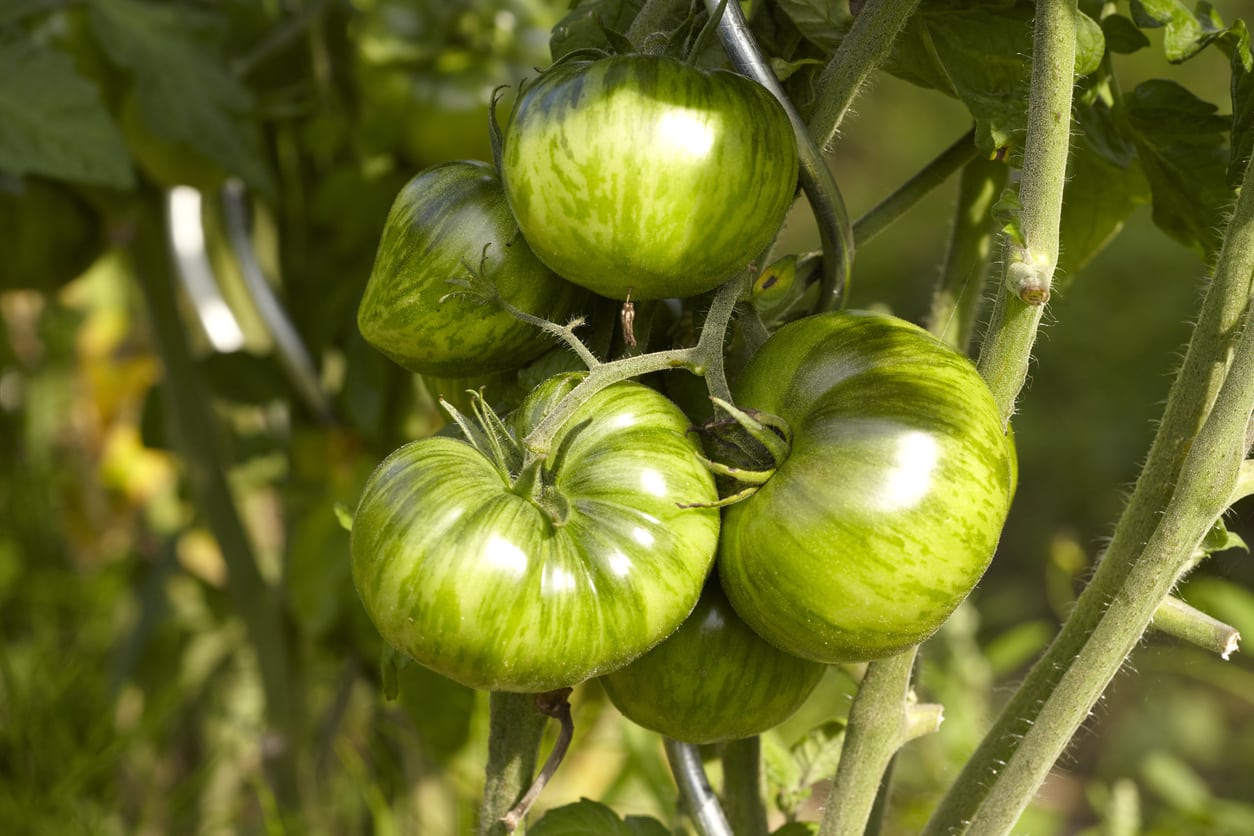Green Zebra Tomatoes: How To Grow Green Zebra Plants In The Garden


Here’s a tomato to please your eyes as well as your taste buds. Green Zebra tomatoes are a zesty treat to eat, but they are also spectacular to look at. This combination, plus a generous per-plant yield, make these tomatoes a favorite with chefs and also home gardeners. If you are ready to start growing a Green Zebra tomato plant, prepare yourself for a real show. Read on for Green Zebra tomato information, including tips on how to grow Green Zebra plants.
Green Zebra Tomato Information
Green Zebra tomatoes are considered a classic tomato species these days and are a delight to add to your garden. As the common name suggests, these tomatoes are striped, and remain striped as they mature, although the color changes. These tomato plants produce fruit that is green with dark stripes. As the tomatoes ripen, they become a chartreuse green-yellow hue overlaid with mottled green and orange stripes. Glorious to look at in the garden or in a salad, Green Zebra tomatoes are also a pleasure to eat. The fruit are relatively small, but the taste is huge, a sparking mix of sweet and tart. They work best in salsas and salads.
How to Grow Green Zebra Tomatoes
If you are wondering how to grow Green Zebra tomatoes, you’ll be happy to find how easy it is. Of course, growing a Green Zebra plant requires good, well-drained soil that is free of weeds and a site with at least six hours of sunlight per day. Irrigation is an essential part of Green Zebra tomato plant care. Give the plants at least an inch (2.5 cm.) of water a week. The plants also need organic fertilizer for tomato plants and supports to keep the plant upright. Supports are very necessary for these tomato plants since they are indeterminate tomatoes, growing on long vines. Green Zebra vines get up to five feet (1.5 m.) tall. They produce continuous crops from mid-season on. Given excellent Green Zebra tomato plant care, your tomato plant will be producing in 75 to 80 days from transplant. Soil temperature necessary for germination is at least 70 degrees F. (21 degrees C.).
Sign up for the Gardening Know How newsletter today and receive a free copy of our e-book "How to Grow Delicious Tomatoes".

Teo Spengler is a master gardener and a docent at the San Francisco Botanical Garden, where she hosts public tours. She has studied horticulture and written about nature, trees, plants, and gardening for more than two decades, following a career as an attorney and legal writer. Her extended family includes some 30 houseplants and hundreds of outdoor plants, including 250 trees, which are her main passion. Spengler currently splits her life between San Francisco and the French Basque Country, though she was raised in Alaska, giving her experience of gardening in a range of climates.